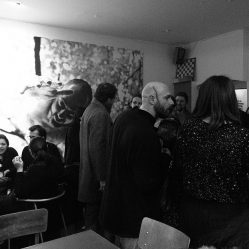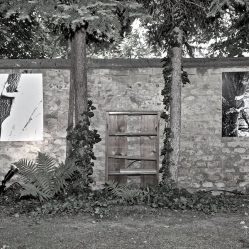The Hiroshima Walk series of photographs showcases the very basic relationship between a human body and nature, be it man-made artificial structure or organic natural environment. In 2013 ten-day Butoh workshop was held in the area around the only Austrian nuclear power plant in Zwentendort which has never served its purpose.
The entire industrial complex is therefore a reminder of seeming dominance of humankind over the nature. In the period of its development, a nuclear power was perceived as such. However, overgrown area in the city of Chernobyl that faced immense catastrophe in 1986 proves that the nature is more resilient than one might think. Instead of deserted, burned-out and infertile land the protected area of former Soviet nuclear plant became a huge forest where nature – in the absence of humans – has erupted ever since. The surrounding area of Chernobyl, open only for tourist guided tours, is nowadays green and seemingly untouched.
Dino Rekanović’s photographs of Butoh dancers entwined between the walls and structures of a power plant and centuries-old trees reflect on this antagonism between natural and artificial. His points of view are consciously inverted and his pictures consequently often distorted. It seems as if the images are silently contradicting dystopian visions of future as it was stereotypically established in popular culture of the 20th century. The figures on the Rekanović’s photos might be witnessing on the fact that the planet might not become a vacant and unpopulated desert but rather that only the humankind will be extinct – if it does not slow down and introspect.
The floating bodies of the dancers are therefore witnessing on the fragility of human body and resilience of nature. They are caught in action. However, the photographer did not document the atmosphere at the workshop but rather directed (or edited) the performances for the camera.
Miha Colner












